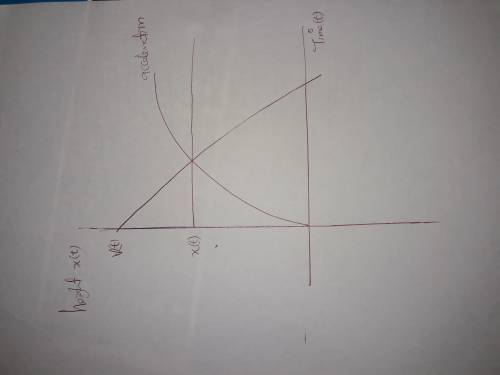
Physics, 25.09.2020 01:01 leslie4759
Suppose you throw a ball straight upward; it rises, then returns to your hand
(a) Calling the point where it leaves your hand the origin and upward positive, make a plausible sketch of its position (vertical height) x(t) versus time t from the instant after it leaves your hand till the instant before it reaches it again.
(b) From your x(t) plot, make a sketch of the ball’s velocity v(t) versus time.
(c) From your velocity plot, sketch a plot of the ball’s acceleration versus time.
(d) Does your plot suggest that the ball’s acceleration is zero at the top of its flight?

Answers: 3


Other questions on the subject: Physics

Physics, 22.06.2019 00:00, cchsemily7210
A1000-kg weather rocket is launched straight up. the rocket motor provides a constant acceleration for 16-s, then the motor stops. the rocket altitude 20-s after launch is 510-m. you can ignore any effects of air resistance. a. what was the rocket’s acceleration during the first 16-s? b. what is the rocket’s speed as it passes through a cloud 5100-m above the ground?
Answers: 1


Physics, 22.06.2019 16:50, boopiee2349
Which best describes the first law of thermodynamics as compared to the second law of thermodynamics? a. the first law describes how thermal energy is conserved but not the direction it moves. b. the first law describes the direction thermal energy moves but not how it is conserved. c. the first law describes how thermal energy can be created but not how it can be destroyed. d. the first law describes how thermal energy can be destroyed but not how it can be created.
Answers: 1

Physics, 22.06.2019 17:30, RegencySlayer5304
Alarge cruise ship of mass 7.00 ✕ 107 kg has a speed of 11.6 m/s at some instant. (a) what is the ship's kinetic energy at this time? (b) how much work is required to stop it? (give the work done on the ship. include the sign of the value in your answer.) (c) what is the magnitude of the constant force required to stop it as it undergoes a displacement of 3.00 km?
Answers: 2
You know the right answer?
Suppose you throw a ball straight upward; it rises, then returns to your hand
(a) Calling the point...
Questions in other subjects:


Mathematics, 16.10.2020 15:01

Physics, 16.10.2020 15:01

Biology, 16.10.2020 15:01





Law, 16.10.2020 15:01

History, 16.10.2020 15:01




